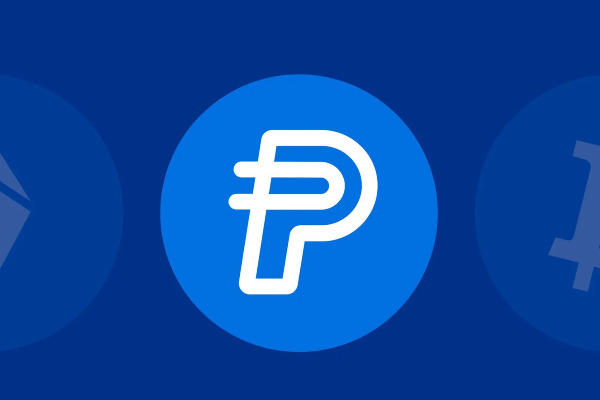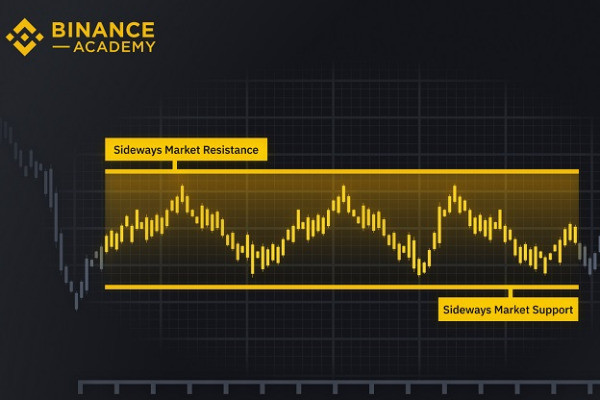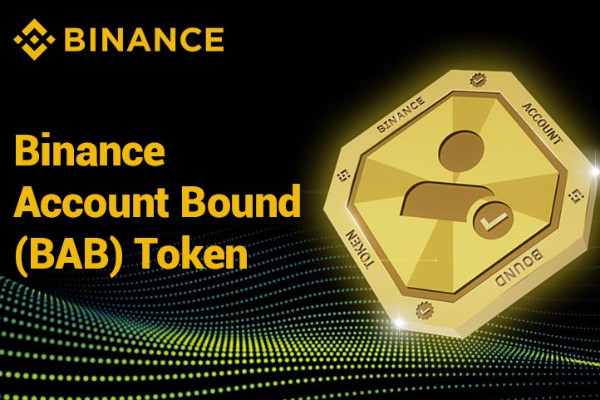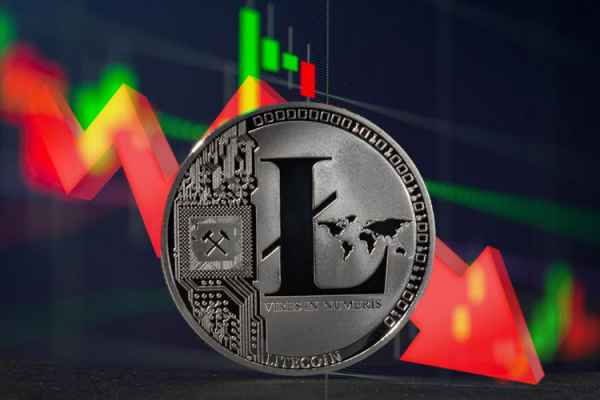Bitcoin may be the most popular, but these ten competitors are not to be trifled with. Why are they often called the best cryptocurrencies other than Bitcoin?

Bitcoin paves the way for the crypto market to flourish. Thousands of cryptocurrencies later, it is still the leader in the industry. As of May 2021, It has a market cap of more than $720 billion, and one token is priced at around $40,000. Despite its apparent dominance, there exist other cryptocurrencies worth investing in.
Here is a list of the best cryptocurrencies you can trade:
- Ethereum (ETH)
- Litecoin (LTC)
- Cardano (ADA)
- Polkadot (DOT)
- Bitcoin Cash (BCH)
- Stellar (XLM)
- Chainlink (LINK)
- BNB (BNB)
- Tether (USDT)
- Monero (XMR)
What are the advantages of each of the cryptocurrencies mentioned above? Let's find out more in the full explanation below.
1. Ethereum (ETH)
Often regarded as the number one altcoin, Ethereum is the second-largest cryptocurrency by market cap, only behind Bitcoin.
As of May 2021, Ethereum's market cap is $319.53 billion which is significantly smaller than Bitcoin's $720 billion.
It should be noted, however, that Ethereum is sitting comfortably in second place as its market cap is five times larger than that of the third-largest crypto.
Ethereum is a decentralized, open-source blockchain platform with smart contracts and decentralized applications (D-apps) functionalities that eliminate downtime, fraud, control, or interference from third parties.
Decentralized finance (DeFi) applications provide financial services for Ethereum users without the need for financial intermediaries. With DeFi, Ethereum is open to anyone from any country, even if a client does not have a bank account. All you need is an internet connection.
Although often used interchangeably with Ethereum, Ether is the actual name of the platform's native cryptocurrency. Ether has a token value of $2,755.50 as of May 2021.
It acts as fuel for Ethereum as it is the only accepted form of payment. Developers who wish to run Ethereum applications are required to pay a fee in Ether. Likewise, investors also use Ether when trading cryptocurrencies on the platform. Unlike Bitcoin, Ether's supply is not capped and its supply schedule is set up by the Ethereum community.
Ethereum was originally funded through a massively successful initial coin offering (ICO) back in 2014. In the first twelve hours, 7 million Ether was sold in exchange for Bitcoin. In 2016, a hacker stole $50 million of Ether through a flaw in a third-party project called the DAO. This incident lead Ethereum to be split into Ethereum (ETH) and Ethereum Classic (ETC).
2. Litecoin (LTC)
Litecoin, dubbed "the silver to Bitcoin's gold", is one of the earliest altcoins to enter the crypto market.
Litecoin was released in October 2011 and created by former Google employee Charlie Lee. Like Bitcoin, Litecoin also uses the proof-of-work system, which makes both cryptocurrencies fundamentally similar.
However, they differ in the algorithm used. While Bitcoin uses SHA-256, Litecoin uses a newer algorithm called Scrypt. This algorithm is designed to make mining more accessible with the use of miners' CPUs or GPUs.
Litecoin also offers faster transactions than Bitcoin. Litecoin can process a block every 2.5 minutes compared to Bitcoin's 9-10 minutes. As a leading altcoin, more merchants have accepted payments with Litecoin these days. As of May 2021, Litecoin had a market cap of $13.79 billion and a token price of $206.64.
3. Cardano (ADA)
Cardano is an open-source and decentralized blockchain platform whose cryptocurrency is Ada. It was developed by, among others, a co-founder of Ethereum named Charles Hoskinson after he had a dispute with his fellow co-founder Vitalik Buterin. Long story short, Hoskinson wanted Ethereum to be a for-profit entity while Buterin wanted it to remain non-profit.
The team behind Cardano's development consisted of academics such as mathematicians and engineers. Together, they conducted research that would become the key to Cardano. The platform and its cryptocurrency themselves are named after Gerolamo Cardano and Ada Lovelace, both of whom were mathematicians.
When we take a look back at its history, it doesn't come as a surprise that Cardano positions itself as the direct competitor of Ethereum. In the crypto market, Cardano is even widely regarded as the Ethereum killer thanks to its use of a proof-of-stake blockchain consensus named Ouroboros.
However, Cardano still has a long way before displacing Ethereum when it comes to decentralized apps. Much like Ethereum, Cardano also aims to develop decentralized financial products that are accessible to anyone. As of May 2021, Cardano has a market cap of $55.43 billion (fifth largest) and one ADA equals $1.74.
4. Polkadot (DOT)
Polkadot is another big name on the list that was created by another Ethereum co-founder, this time by Gavin Wood. Following a disagreement over a future Ethereum project, Wood released the Polkadot white paper in 2016.
Polkadot is a proof-of-stake blockchain platform and its native cryptocurrency is Dot. As of May 2021, Polkadot's market cap is $26.81 billion and one Dot has a value of $28.54.
Polkadot's proof-of-stake protocol makes it possible for you to connect several blockchains, both permissioned and permissionless, as well as oracles under one network, which is known as a multi-chain network. In other words, you are given the ability to interoperate with a wide variety of blockchains simply by connecting to Polkadot.
The relay chain, the central chain of Polkadot, is the core component that allows that kind of interoperability. Polkadot is also capable of cross-blockchain transfers of any type of data or asset thanks to its parachains. Parachains allow cross-network bridges to external networks such as Bitcoin, Ethereum, etc.
In terms of network security, Polakdot has the upper hand over its competitors thanks to the shared security feature. For example, developers on Ethereum have to create their own security measures whenever they create new blockchains.
As a result, newer and smaller projects will be vulnerable to attack as opposed to larger blockchains that have more security. With the shared security, developers on Polkadot can use the security that the relay chain has provided.
5. Bitcoin Cash (BCH)
Bitcoin Cash is the first and most successful Bitcoin fork.
The Bitcoin fork refers to the modifications to the original Bitcoin computer code and the subsequent release of a spin-off token with "Bitcoin" in their names.
In the case of Bitcoin Cash, the fork occurs as a result of Bitcoin activists, investors, entrepreneurs, developers, and largely China-based miners pushing forward an increase in Bitcoin's block size.
Since Bitcoin, or any other cryptocurrency, is decentralized, the changes to the code must be decided by general consensus. This was where heated arguments began. Bitcoin also had many supporters who believed that the blocks should remain small so that nodes could be operated with fewer resources.
Eventually, both parties couldn't resolve their differences, resulting in the creation of Bitcoin Cash in 2017 through a hard fork. Bitcoin Cash is equipped with a larger block size of eight megabytes. In comparison, Bitcoin remains with its one-megabyte block size.
The idea behind this increase is that larger blocks enable more transactions which in turn will increase the transaction speed. Or at least that is how it works in theory. Bitcoin Cash also removes the Segregated Witness (Segwit) protocol, which is implemented in Bitcoin to mitigate the scalability problem without increasing the block size limit.
In 2018, history repeated itself when a hard fork chain split of Bitcoin Cash occurred between two factions: Bitcoin Cash and Bitcoin SV. The origin of this "civil war" was once again the block size limit. The first faction supported a limit of 32 megabytes, while the second one wanted to increase it to 128 megabytes.
As of May 2021, Bitcoin Cash is the 10th largest cryptocurrency with a market cap of $15.48 billion. Also, one Bitcoin cash equals $825.96.
6. Stellar (XLM)
Stellar, or Stellar Lumens, is an open-source blockchain protocol founded by Ripple co-founder Jed McCaleb in 2014. The main perk of Stellar is its ability to execute large transactions between financial institutions without the typical hurdles.
When banks and investment companies make large transactions, they normally have to involve several intermediaries. This situation will prolong the completion of transactions, not to mention it will also increase the cost of transactions. Stellar eliminates the need for intermediaries so transactions can be done right away with little to no transaction costs.
Institutional transactions aside, Stellar is pretty much available for anyone to use. Stellar's open-source network allows you to trade any currency, be it crypto or fiat.
Stellar has its built-in cryptocurrency named Lumen. Each user is required to hold a small number of Lumen at all times to be able to use Stellar. As of May 2021, one Lumen is valued at $0.484 and Stellar has a market cap of $11.20 billion.
7. Chainlink (LINK)
Chainlink was founded by Sergey Nazarov in 2017. As of May 2021, Chainlink's market cap is $12.59 billion, and one LINK has a price of $29.53. Chainlink is a decentralized oracle network that allows smart contracts on Ethereum to connect to external data sources.
Blockchain smart contracts alone cannot communicate with outside information, thus limiting their usage. As a decentralized oracle network, Chainlink helps translate data from off-blockchain sources to on-blockchain smart contracts and vice versa so that the contracts can be executed.
On Chainlink's blog, we can find many use cases of its Oracle network. One of them is for emissions and waste management. IoT-enabled smart contracts could be set up to measure output and efficiency. Chainlink oracles could track this data and feed it directly into smart contracts.
The smart contract could be set up to automatically trigger payments to the regulating body for overconsumption, monetize the recycled garbage, or generate payment structures with lower bills for those who use more biodegradable items.
8. BNB (BNB)
Binance has been the largest cryptocurrency exchange in terms of trading volume since January 2018, with a daily volume of more than $100 million as of May 2021. At the same time, its digital coin is also the third-largest in terms of market cap ($59.63 billion) with one BNB valued at $388.64. Users who pay in BNB are entitled to discounted prices when trading on the Binance Exchange.
Binance was founded in China by trading software developer Chanpeng Zhao a.k.a. CZ in 2017. Since then, Binance has moved its headquarters multiple times to evade strict regulations from the governments until finally finding its home in the Cayman Islands.
In the beginning, Binance operated on the Ethereum blockchain and use ERC-20 token. Today, Binance has its own blockchain protocol with a proof-of-stake consensus algorithm.
9. Tether (USDT)
Founded in 2014, Tether is a cryptocurrency that falls under the stablecoin category. Stablecoins aim to keep cryptocurrency valuations stable by pegging their prices to other cryptocurrencies, fiat money, or exchange-traded commodities.
Tether itself uses the US dollar as its point of reference in order to reduce volatility and attract potential users. Therefore, one Tether token is priced at $1.00, and as of May 2021, it is the fourth-largest cryptocurrency with a $58.61 billion market cap.
Tether platform is built in blockchain technologies designed to facilitate the use of fiat currencies in digital manners. Since the token represents the value of the US dollar, it is less susceptible to volatility and complexity typically present in the crypto world. Moreover, having a Tether token (instead of US dollar) eliminates transaction costs and trade execution.
10. Monero (XMR)
Released in 2014, Monero is a cryptocurrency that focuses on privacy.
Monero enforces various privacy-enhancing features in its network such as ring signatures, stealth addresses, bulletproofs, dandelion++, and auditing. These features are implemented for untraceability and unlinkability.
For example, the ring signatures hide the identity of the sender, thus achieving untraceability. The stealth addresses protect the identity of the receiver, thus achieving unlinkability.
With its privacy mechanism, Monero is an attractive choice not only for legitimate users but also for criminals. Monero has been accused of indirectly facilitating transactions in darknet markets; basically websites for selling and buying illegal items. On the other side, Monero helps store the wealth of individuals who live in oppressive governments.
As of May 2021, Monero has a market cap of $5.52 billion and one token equals $308.04.
Final Words
Cryptocurrencies are digital currencies in the form of coins that exist on a distributed and decentralized ledger. It is fair to say that Bitcoin is still the king in the crypto market, whether it is in terms of market cap, user base, or popularity. However, some altcoins have emerged in the market as serious competitors to Bitcoin.
The ten altcoins above offer features that are not present in Bitcoin, such as shorter periods of block time, proof-of-stake consensus algorithm, larger block size, less volatility, etc. These are the best cryptocurrencies that you can trade other than Bitcoin, as they are supported by many distinctive qualities that make them sustainable and prospective for future investments.

 Dedicated FREE FOREX VPS
Dedicated FREE FOREX VPS Free FOREX Virtual Private Server
Free FOREX Virtual Private Server MT4 Demo Contest, Get $500
MT4 Demo Contest, Get $500 Sign Up for an Account, Claim 60% Deposit Bonus
Sign Up for an Account, Claim 60% Deposit Bonus Free MT4/MT5 VPS 2024
Free MT4/MT5 VPS 2024 Send E-mail and Get Free Merchandise
Send E-mail and Get Free Merchandise $1K Refer a Friend Bonus for Pepperstone Pro clients
$1K Refer a Friend Bonus for Pepperstone Pro clients Maximize Your Earnings with 100% Deposit bonus
Maximize Your Earnings with 100% Deposit bonus Trade to Win, $5,000 Monthly Demo Contest
Trade to Win, $5,000 Monthly Demo Contest Claim 30% + 15% Deposit Bonus from LiteFinance
Claim 30% + 15% Deposit Bonus from LiteFinance






 Bitcoin
Bitcoin Ethereum
Ethereum Tether
Tether BNB
BNB Solana
Solana USDC
USDC XRP
XRP Dogecoin
Dogecoin Toncoin
Toncoin Cardano
Cardano